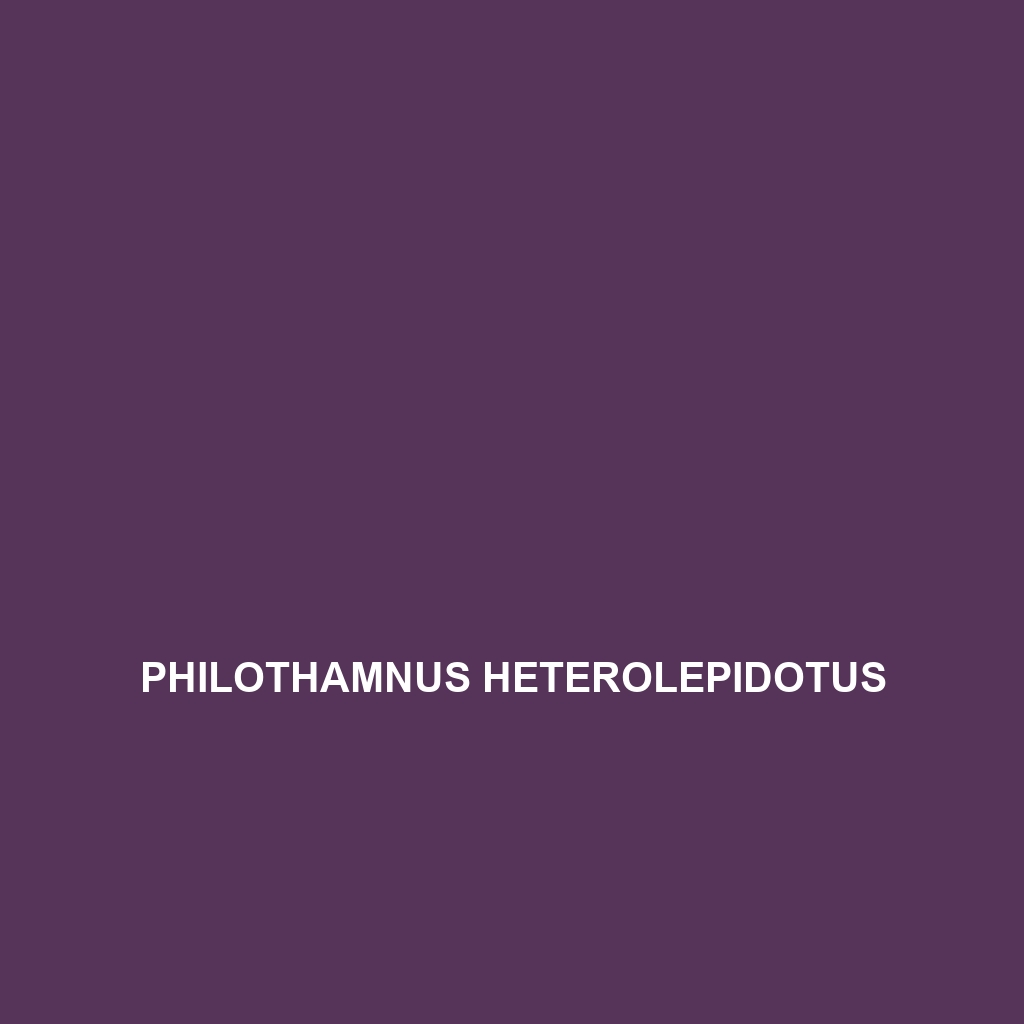Common Name
Philothamnus heterolepidotus
Scientific Name
Philothamnus heterolepidotus
Habitat
Philothamnus heterolepidotus, commonly known as the “African Green Snake,” primarily inhabits diverse environments across sub-Saharan Africa. These regions include lush tropical rainforests, open savannas, and various temperate forests. Characterized by high humidity and temperatures, these habitats provide the ideal ecological conditions the species requires for survival. In addition to terrestrial settings, Philothamnus heterolepidotus is also frequently found near bodies of water, such as lakes and rivers, where it can thrive in the rich biodiversity of marine habitats. Its adaptability to different climatic conditions, ranging from humid to semi-arid, showcases its ecological versatility.
Physical Characteristics
Philothamnus heterolepidotus exhibits distinct physical features that aid in its identification and classification. Typically, these snakes grow to a length of 90 to 120 centimeters (approximately 3 to 4 feet), exhibiting a slender, elongated body shape. The coloration is striking, usually ranging from bright green to pale yellow, layered with subtle patterns that mimic the foliage of its habitat. Their smooth scales glisten in sunlight, which can serve as camouflage among the dense vegetation. Notable features include large, prominent eyes that enhance their ability to detect movement, making them efficient hunters.
Behavior
The behavior of Philothamnus heterolepidotus reveals a fascinating array of adaptations. This species is primarily diurnal, thriving during daylight hours, which aids in its hunting activities. During this time, it exhibits a unique ability to blend seamlessly into its environment, often remaining motionless for extended periods to ambush unsuspecting prey. Socially, these snakes tend to be solitary, often coming together only during mating seasons. Their courtship rituals involve intricate displays of body movement and coloration changes. Additionally, Philothamnus heterolepidotus possesses remarkable climbing skills, allowing it to navigate branches effectively in search of prey.
Diet
Philothamnus heterolepidotus follows a carnivorous diet, primarily consuming small mammals, birds, and other reptiles. They are particularly known for their preference for skinks and frogs, making them proficient insectivores as well. Employing constriction to subdue their prey, these snakes showcase an array of feeding strategies that highlight their adaptability. The hunting tactics of Philothamnus heterolepidotus involve ambush and active stalking, which showcases their keen senses and agility.
Reproduction
Reproduction in Philothamnus heterolepidotus occurs during the warmer months, with the peak of mating often aligned with the beginning of the rainy season. Females are oviparous, laying clutches that range from 5 to 20 eggs, depending on environmental conditions and food availability. The gestation period lasts approximately 6 to 8 weeks, after which the young emerge as fully functional snakes ready to hunt on their own. Parental care is absent post-hatching, as the young receive little to no nurturing from their mother, which is typical of snake species.
Conservation Status
The conservation status of Philothamnus heterolepidotus is currently assessed as “Least Concern” by the International Union for Conservation of Nature (IUCN). This classification suggests that while the species faces threats from habitat destruction and climate change, it has a relatively stable population in regions with suitable habitats. Efforts to conserve its environment include habitat restoration projects and research initiatives aimed at understanding their ecological roles and threats in the wild.
Interesting Facts
Philothamnus heterolepidotus possesses several intriguing adaptations that enhance its survival. For instance, this species is known for its ability to mimic the coloration of native leaves, providing an effective means of camouflage against predators. Furthermore, it has been observed displaying a defensive behavior where it flattens its body and raises its head to appear larger when threatened. Its agility in trees complements its opportunistic feeding style, allowing it to evade detection and uncover food sources effectively.
Role in Ecosystem
The ecological role of Philothamnus heterolepidotus is pivotal in maintaining the balance of its habitat. As both predator and prey, these snakes contribute significantly to the regulation of small animal populations, including rodents and insects. They play a crucial role as a predator, controlling populations of small vertebrates which, in turn, supports plant growth and ecosystem diversity. Furthermore, the presence of Philothamnus heterolepidotus signifies a healthy, functioning ecosystem, highlighting its importance as a biological indicator of environmental health.
